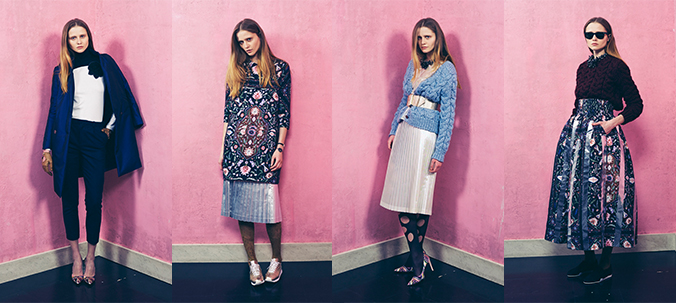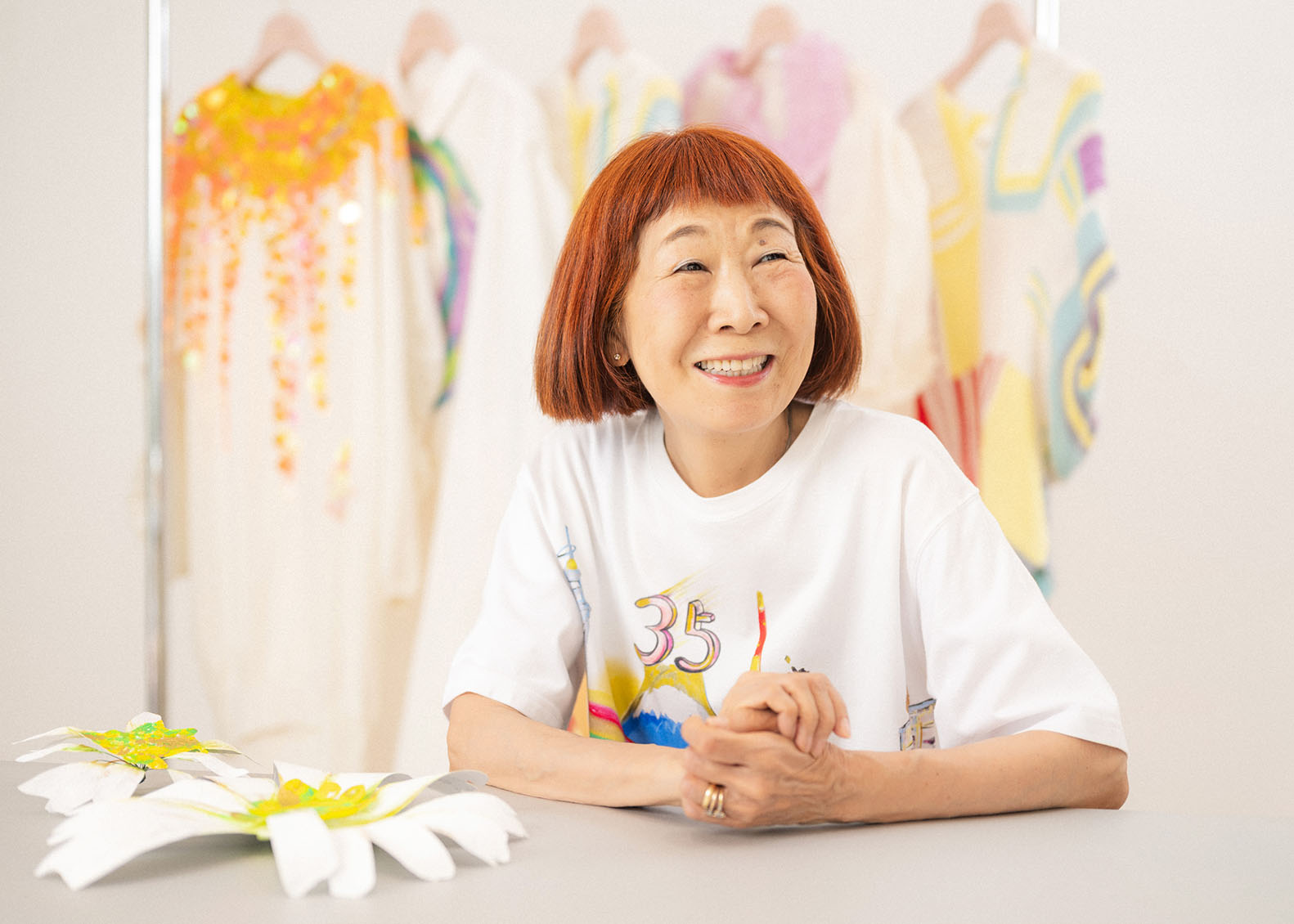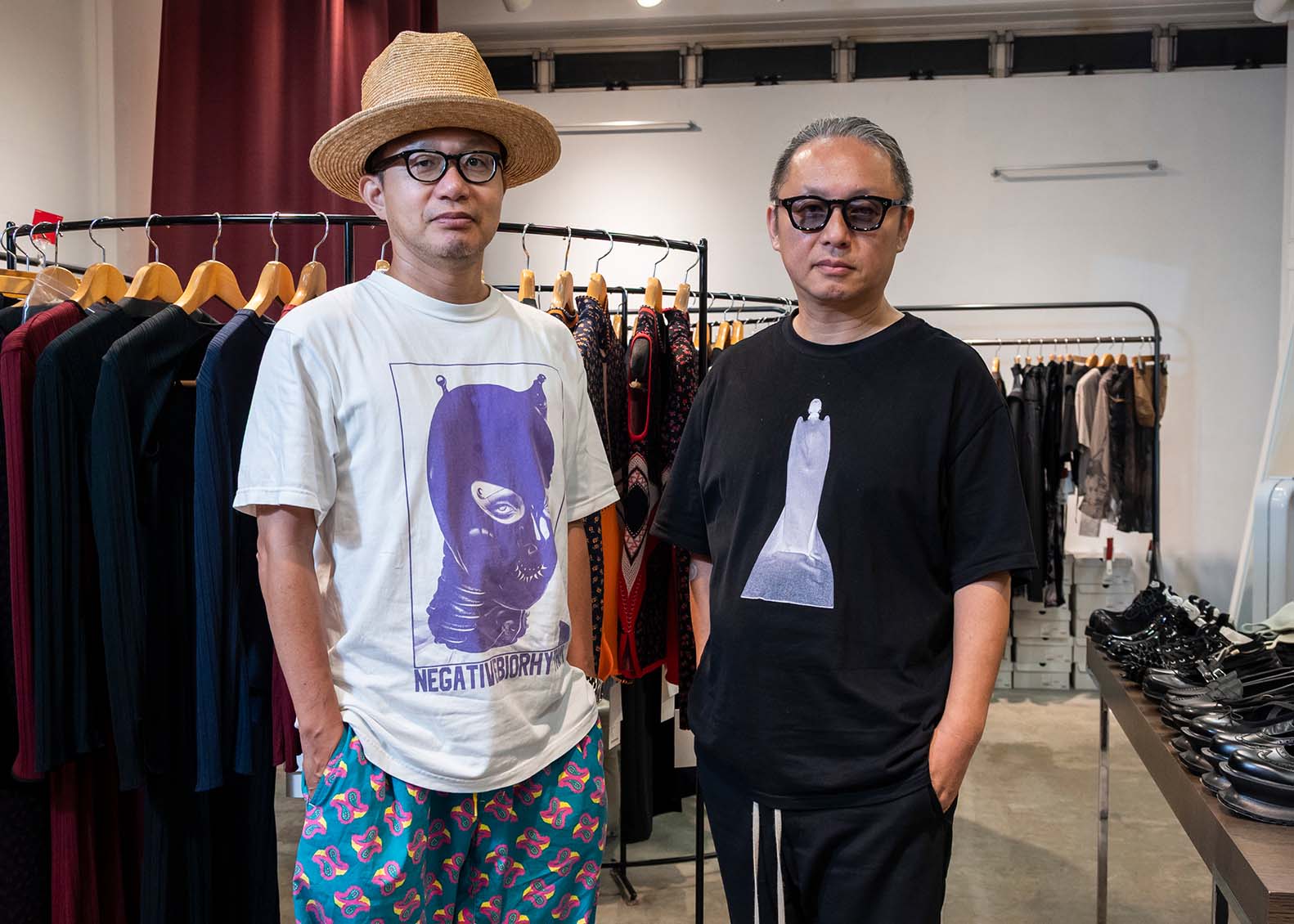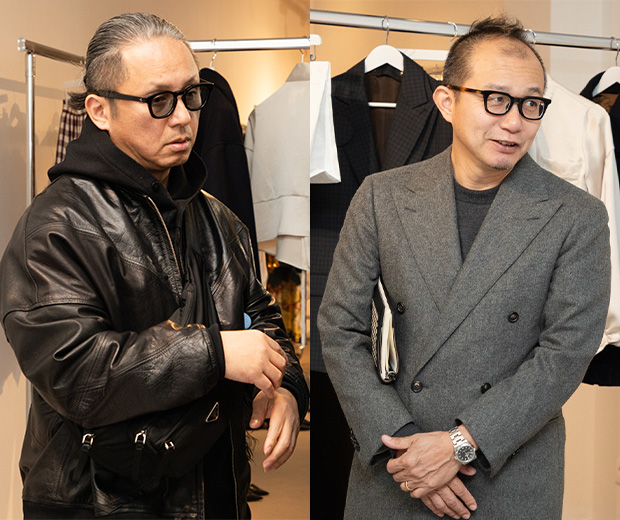Taro Horiuchi
Taro Horiuchi graduated first in his class from the Royal Academy of Fine Arts in Antwerp and launched his own brand “TARO HORIUCHI” in 2008. While collaborating with various designers both in Japan and overseas Taro Horiuchi has gained much attention for his line of modern women’s fashions that convey his sense of ordered aesthetics. There is much anticipation to see his collection at “VERSUS TOKYO” to be held on the last day of the Mercedes-Benz Fashion Week TOKYO 2015 S/S, which will be the first time his brand has been unveiled in presentation format.
We talked with TARO HORIUCHI designer Taro Horiuchi about his motivation for studying fashion, his enthusiasm about participating in “VERSUS TOKYO” and his outlook for the brand.
Could you tell me about your experience from that time until you entered the Royal Academy of Fine Arts in Antwerp?
I didn’t have much interest in fashion but at the art school I was going to there were a lot of people who had an interest in Japanese culture and I had friends who loved “A Bathing Ape”. So, I was in an environment where I had the chance to look at Japanese street fashion from a kind of reverse-import point of view. I myself loved magazines like “relax” and there are brands like “SILAS” in England that spurred my interest in street fashion more than mode. It was at that time that I learned of Martin Margiela who lives on the border between the art that I was involved in and fashion, and I became drawn to him. So, I looked up the school that he graduated from and that was Antwerp.
You graduated at the top of your class from the Royal Academy in Antwerp?
Antwerp is a school for thoroughly examining who you are and in the process of devoting every ounce of myself to doing just that I brought myself to a point that I couldn’t turn back from (laugh), and as a result I wound up graduating at the top. After graduation I worked a little bit in Europe and there were a lot of students who had graduated before me and also Japanese designers my age that were launching their own brands so I decided to launch my own brand in Japan really without any hesitation.
Did you have a clear vision of your brand when you launched it?
From the time I was at Antwerp I always had the desire to express a “sense of transparency” and the concept of my brand is to express an atmosphere of a sense of values that transcends age and gender. When I first launched my brand I took a very direct approach to expressing a pure form of what I wanted to convey, but this wasn’t quite in line with what the Japanese market was demanding. But, I used that as a positive experience and continued to experiment both on the creative and business aspects of the brand which enabled me to offer my vision and expression of the feminine for each season.
What are you trying to communicate through the clothes that you create?
I tend to live a very simple life and usually find myself wearing the same shirt, jeans, and shoes almost every day. And, I incorporate the works of other artists into my otherwise ordinary life, so what I try to do is create clothes that will add stimulus to the lives of the women that wear them. At current time I distribute through a wide variety of channels, from department stores to specialty shops, so I create for a wide variety of people, from those that like conceptual items to those people that are looking for more conservative, simple clothes. I find it incredibly intriguing how the clothes that I make are transformed by the wearer in different ways, so I try to create clothes that are versatile and have a certain amount of space left over for any type of transformation that the wearer sees fit.
What are you trying to communicate through the clothes that you create?
I tend to live a very simple life and usually find myself wearing the same shirt, jeans, and shoes almost every day. And, I incorporate the works of other artists into my otherwise ordinary life, so what I try to do is create clothes that will add stimulus to the lives of the women that wear them. At current time I distribute through a wide variety of channels, from department stores to specialty shops, so I create for a wide variety of people, from those that like conceptual items to those people that are looking for more conservative, simple clothes. I find it incredibly intriguing how the clothes that I make are transformed by the wearer in different ways, so I try to create clothes that are versatile and have a certain amount of space left over for any type of transformation that the wearer sees fit.

TARO HORIUCHI 2014-15 A/W
How is the Japanese market compared to that of Europe where you’ve spent many years?
Well, for example in Paris, many men throughout the city can be seen walking around wearing dress suits outside of work, which is something you don’t really see here in Japan. I’m more partial to this refined look so it feels a little weird being in Japan, but Japan has a different culture and a different climate so it’s natural that the fashion here is different as well. I have spent almost half my life overseas so the sense of fashion, and knowledge about fashion, that I have has come from Europe. But at the same time, deep down inside I have this sense of Japanese street culture and fashion that was conveyed to me through the magazines that I was reading when I was in school, such as “relax”. For someone like me who considers himself to be half Japanese, half something else, it’s really fun to design in Japan.
What you like the most about Japan street culture?
The term “street” conveys a sense of diversity and danger, but that doesn’t exist in prosperous Japan. Tokyo street fashion has an extremely refined sense of aesthetics created by intellectuals which in turn has created a unique atmosphere. I think this is what foreigners find to be so fresh and it’s what made my young English friends so eager for me to buy them A Bathing Ape t-shirts when I came back to Japan for summer vacation. I had my pre-collection catalogue photographed by Takashi Honma, and being able to ask artists that I looked up to when I was a student to help me with my collection is for me, a person who has his roots in Tokyo street fashion, one of the most amazing things about the Tokyo scene.
Are you excited about participating in “VERSUS TOKYO”?
This is the first time for the brand that a collection has been presented in this way and the event itself is attended by non-industry related people as well making it a kind of a festival atmosphere, so I think it’s a good opportunity for us to see how the collection will go over. The unveil will be in the form of a presentation and I’m getting help from an old friend at the creative agency “SIX”, Tsubasa Oyagi, to help with presentation aspects as well as Shuta Hasunuma to handle the music.
Lastly, could tell me about your future plans for the brand?
I’ve thought deeply about what I want to express during the first three years since I returned to Japan and launched my brand, and in the next three years I learned more about the Japanese market and business. In the last three years I tried many different things while trying to pick up momentum, so I think going forward another option for me would be to slow down a little and take the next step at our own pace. I’m also very interested in the approach of turning space itself into an aesthetic.





